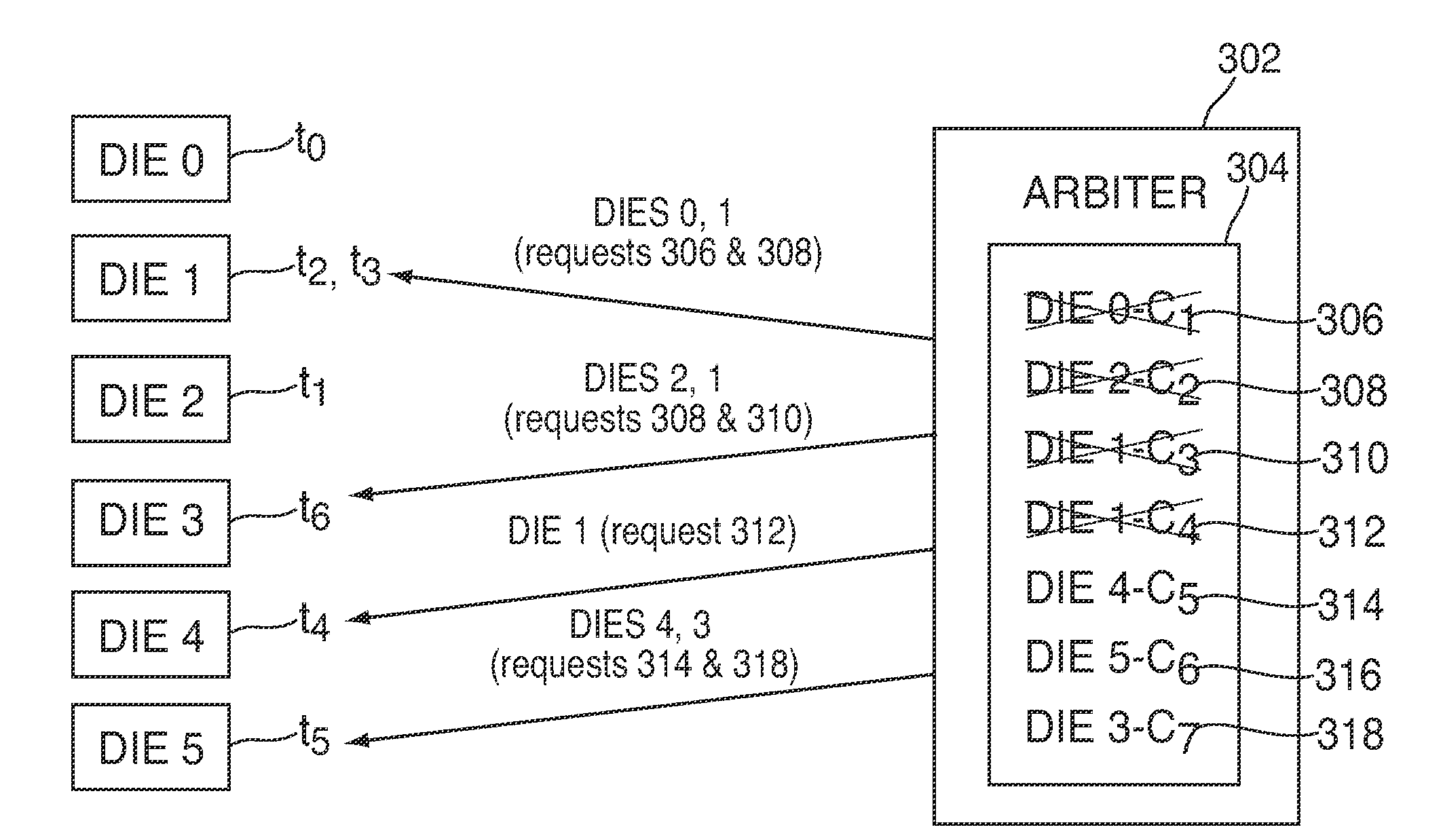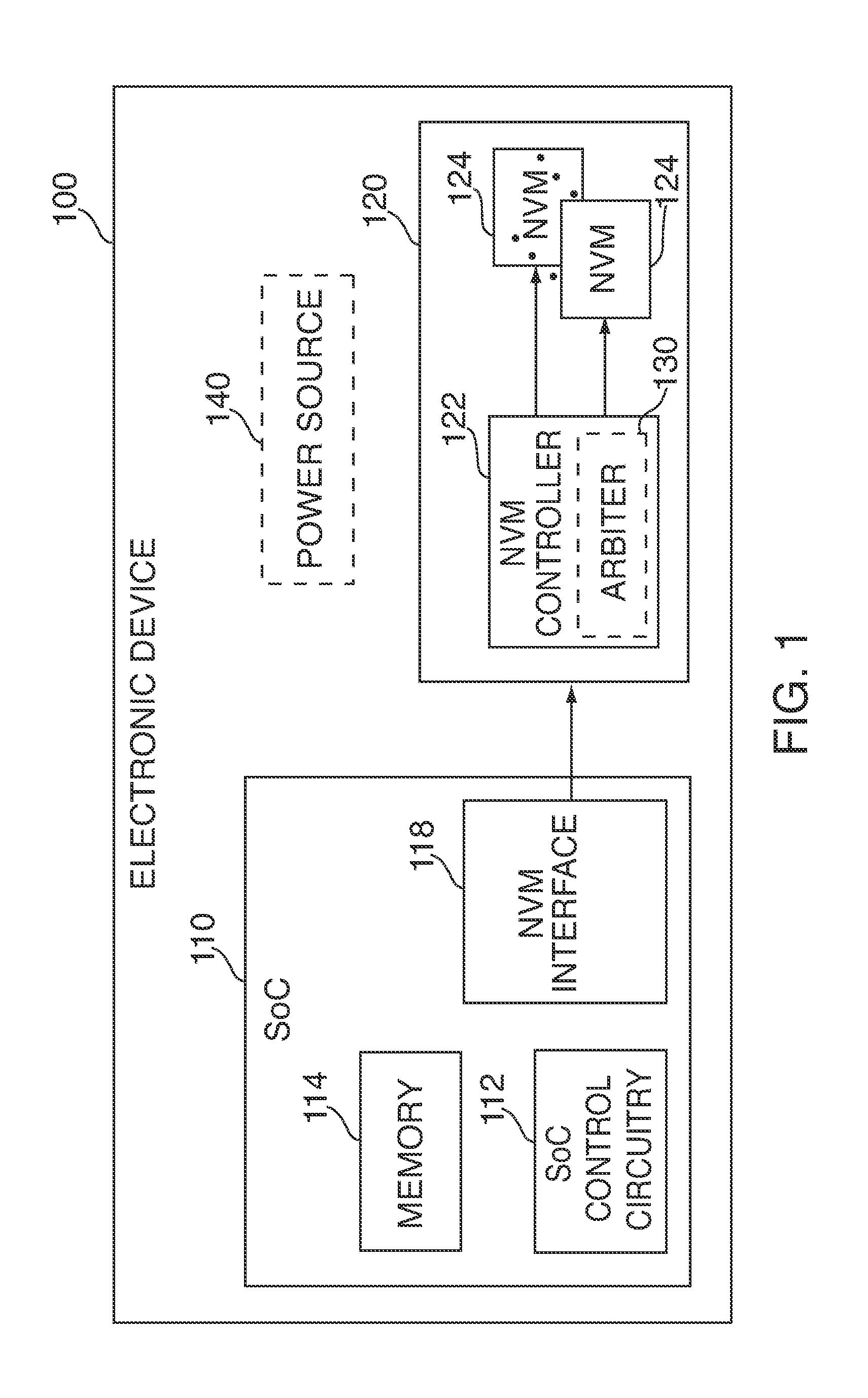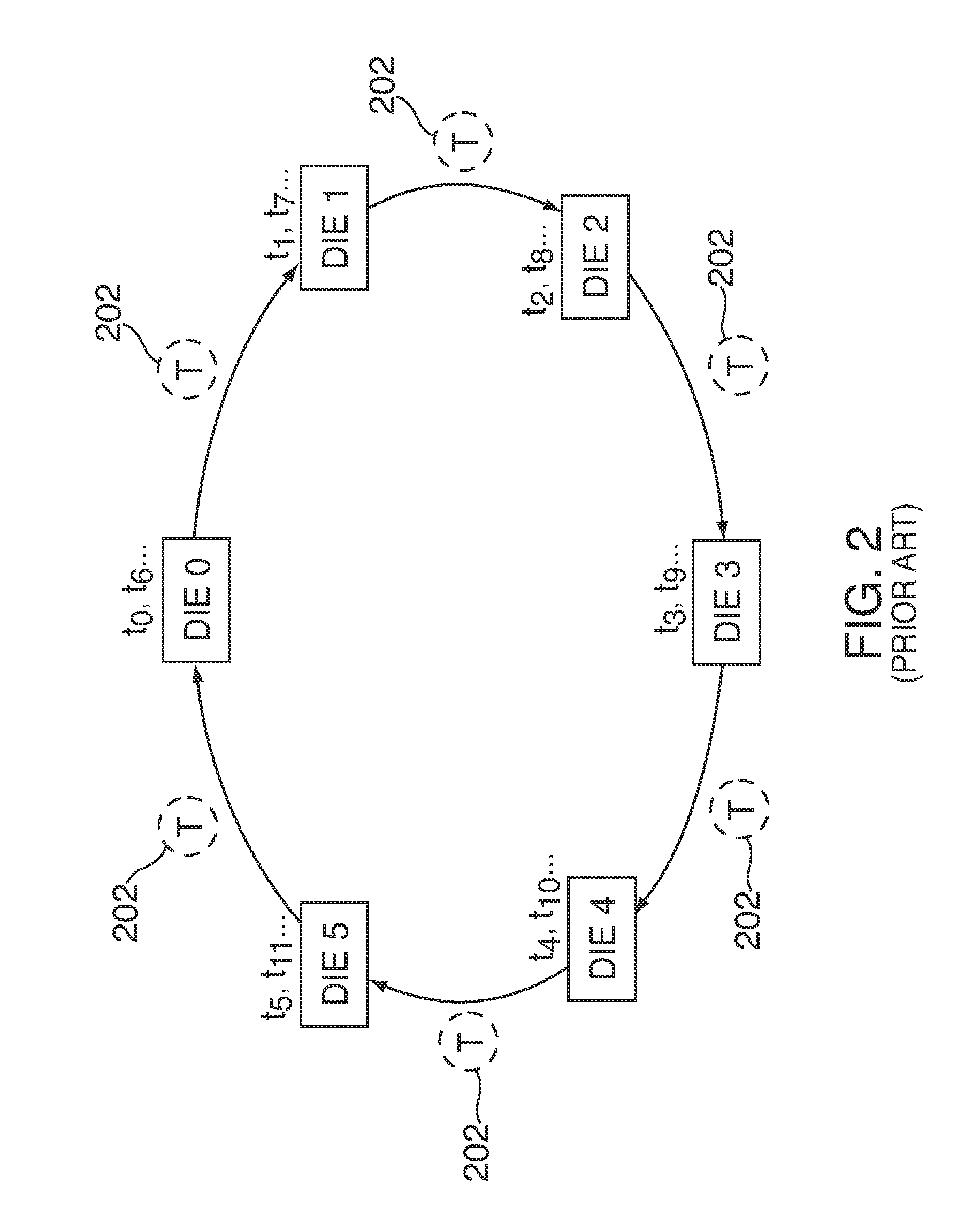Asynchronous management of access requests to control power consumption
a technology of access request and power consumption, applied in the direction of power supply for data processing, instruments, computing, etc., can solve problems such as latency, and achieve the effect of reducing latency and power consumption
- Summary
- Abstract
- Description
- Claims
- Application Information
AI Technical Summary
Benefits of technology
Problems solved by technology
Method used
Image
Examples
Embodiment Construction
[0012]Systems and methods for asynchronous management of memory, including non-volatile memory (“NVM”), to control power consumption are provided. Asynchronous management of power consumption can reduce input / output latencies in a system.
[0013]In some embodiments, an arbiter of a system can receive a request from a NVM interface, where the request may be associated with a die of a NVM. The request may be an access request (e.g., a read, program, or erase command).
[0014]Once the request has been received, the arbiter can add the received request and associated current draw to a queue of requests. The queue of requests can include requests that have been received from the NVM interface but that have not yet been serviced. After the request and associated current draw has been added to the queue, the arbiter can send a signal to the NVM interface, where the signal acknowledges the request.
[0015]In order to service one or more requests in a queue of requests, the arbiter can select a re...
PUM
 Login to View More
Login to View More Abstract
Description
Claims
Application Information
 Login to View More
Login to View More - R&D
- Intellectual Property
- Life Sciences
- Materials
- Tech Scout
- Unparalleled Data Quality
- Higher Quality Content
- 60% Fewer Hallucinations
Browse by: Latest US Patents, China's latest patents, Technical Efficacy Thesaurus, Application Domain, Technology Topic, Popular Technical Reports.
© 2025 PatSnap. All rights reserved.Legal|Privacy policy|Modern Slavery Act Transparency Statement|Sitemap|About US| Contact US: help@patsnap.com



